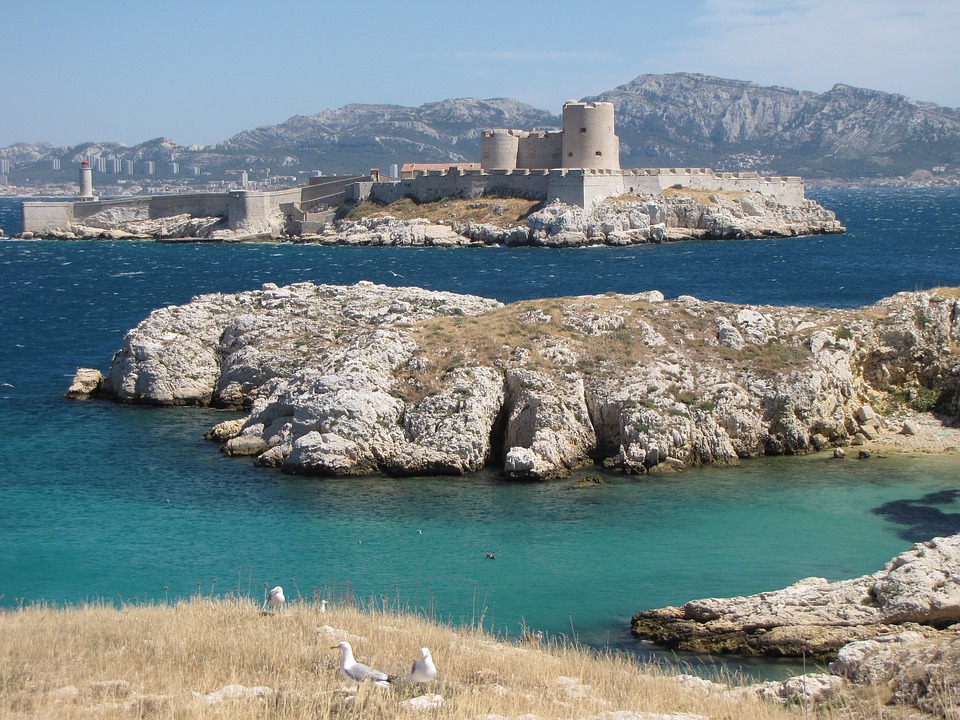Château d’If: The Original Alcatraz Posted by mtaulier on Oct 21, 2013 in Uncategorized

For those of you who are familiar with classic French literature, you have probably read—or at least heard of—Le Conte de Monte-Cristo (The Count of Monte-Cristo), a novel written by famed 19th century French author Alexandre Dumas. Edmond Dantès, the main character, is wrongfully accused of being a Bonapartiste (a follower of Napoleon) and is imprisoned in château d’If (castle of If). While in prison, Dantès befriends l’Abbé Faria (Abbot Faria) who becomes his mentor and reveals to him the location of a vast treasure on the island of Montecristo off the coast of Italy. Dantès escapes from If, finds the treasure and seeks revenge on those who betrayed him.
Le Conte de Monte-Cristo is an archetypal tale of revenge and has rightfully earned its place in the pantheon of classic French literature. The story has been adapted to film, television, theater, etc. If you aren’t interested in reading the book, I highly recommend the 2002 movie The Count of Monte Cristo starring Jim Caviezel as Edmond Dantès.
Although the novel is purely fictional, many of the locations within the book do exist and château d’If is one of them. Located in the Mediterranean Sea a couple miles off the coast of Marseille (the third largest city in France), château d’If was originally built as a fortress between 1527 and 1529 on the orders of King François I (Francis I). It was never put to use as a defensive outpost but instead became a high-security prison akin to the more modern Alcatraz Federal Penitentiary located off the coast of San Francisco in California. If remained a prison until 1890 when it was opened to the public and became a tourist attraction thanks, in no small part, to the popularity of Le Conte de Monte-Cristo.
If you have ever visited a medieval castle, then you are no doubt familiar with the dark rooms, humid atmosphere and general dreariness that is the hallmark of ancient stone structures. Add to that the complete isolation of a rocky promontory in the Mediterranean Sea and you have château d’If. The cachots (cells), also known as oubliettes (from the verb oublier, to forget) are rather large but completely dark save for a small window covered with rusted metal bars. Although sunshine is abundant in southern France, for those who were imprisoned in Château d’If, the sense of désespoir (despair) and isolation must have been overwhelming. In the 17th and 18th centuries, more than 3,500 Huguenots (French Protestants) were imprisoned in the château following King Louis XIV’s revocation of the Édit de Nantes (Edict of Nantes).
Thankfully, those days are gone and tourists have become les nouveaux prisonniers du château (prisoners of the castle). A small boat will take you from Le Vieux Port (The Old Port) in Marseille to Château d’If where you will be free to roam the grounds and visit, at your leisure, the cells of Edmond Dantès and l’Homme au Masque de Fer (the Man in the Iron Mask). Make sure you ascend the stairs to the top of the château for a pictureque view of the Mediterranean and of nearby Marseille. The weather is usually accommodating so you should be able to capture some nice shots of the surrounding areas. And on your way back to the boat, pick up some cartes postales (post cards) and other types of souvenirs at the gift shop.
But most of all, as you enter the dark cells and graze the humid walls of the château, take a moment to remember the plight of the thousands imprisoned within them. What good is visiting a historic site if we do not take time to reflect upon the misery endured by our fellow human beings, albeit in an era distant from our own? Edmond Dantès was not a real person but the suffering of those forgotten prisoners, some no doubt wrongly accused, is very real and still reverberates from within the walls of the legendary château d’If.

Build vocabulary, practice pronunciation, and more with Transparent Language Online. Available anytime, anywhere, on any device.




Comments:
andreas:
Salut Michael.
Merci pour le blog. Mais je crois que ça serait bien si tu pouvais écrire plus en français qu’en anglais.
Andreas